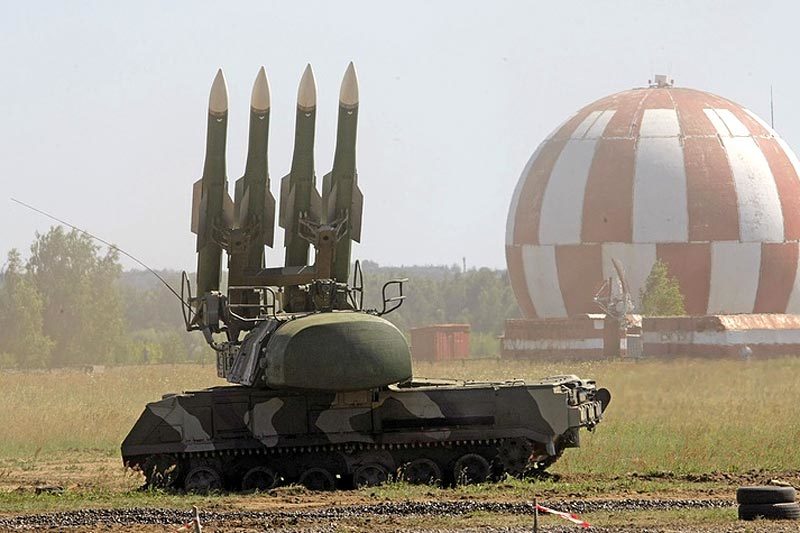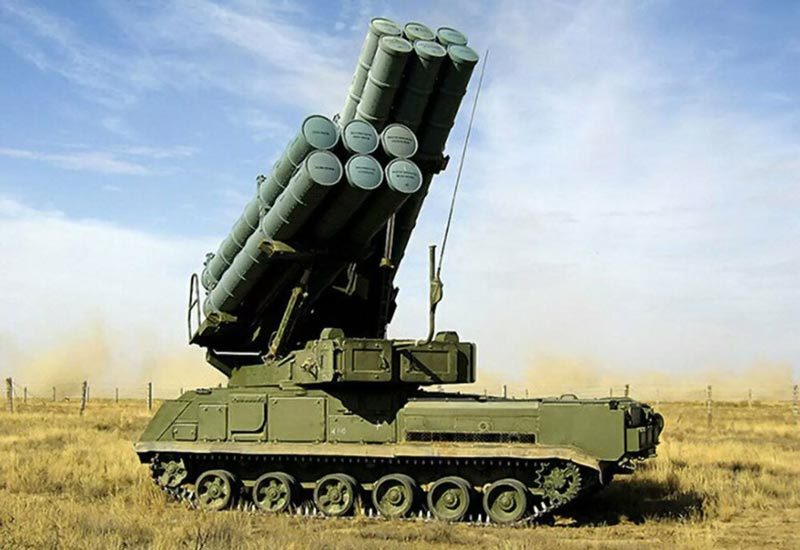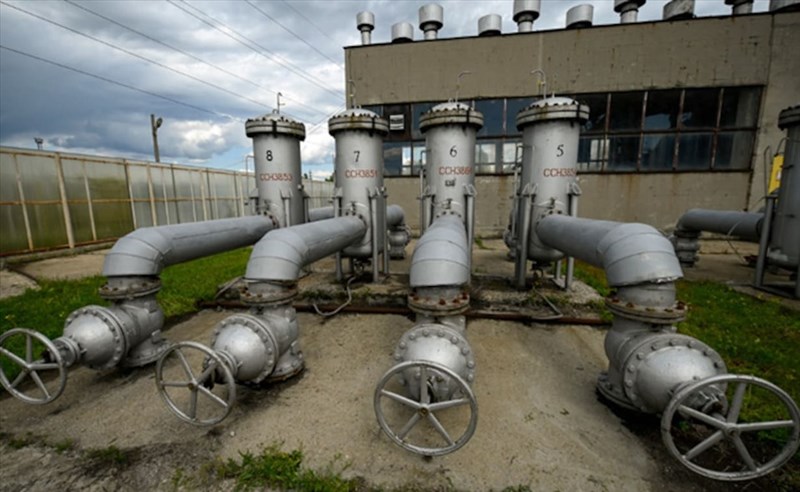The unfortunate situation of the “brothers” of the Buk missile line in Ukraine
The “ancestor” of the current versions of the Buk (Oak) missile is the Buk 9K37 medium-range air defense missile system, built in 1972 by the Tikhomirov Institute of Science/Ministry of Electronic Industry of the USSR.
Buk 9K37 (NATO name Gradfly, US called PK SA-11) entered service in the Soviet army in 1980. This mobile, self-propelled anti-aircraft missile system is designed to destroy road missiles. ammunition, cruise missiles, precision bombs, helicopters and fixed wings, drones, surface targets.
 |
| Buk missile complex. Photo: AP |
Rated as one of the most modern mobile air defense systems in the world, up to now, Buk has been improved through many versions, such as: 9K37M Buk-M1 (1984); 9K37 Buk-M1-2 (1988); 9K37M1 Buk-SAR (1995); Buk-M2, Buk-M3 (2016). The price of each system is about 61 million USD.
A standard Buk-M1 battalion consists of: 1 command vehicle; 1 vehicle-mounted reconnaissance/tracking and control station (TAR); 6 launch vehicles (TELARs), each carrying 4 ready-to-launch rockets and 4 spare rockets, rockets are mounted on a rotating 3600 rack; 3 ammunition trucks; 9S18 Tube Arm radar (or 9S18M1 Snow Drift) can track targets from a distance of 85 km. Buk missile batteries only need 5 minutes to deploy and withdraw from the battlefield after launching. The reaction time of the gun from tracking the target to launching the missile is about 22 seconds.
The Buk-M1-2 version equips the national air defense force, the army air defense force and the coast guard, which can operate in conditions of strong interference and avoid most types of dummy interference. . Unlike the previous version, the Buk-M1-2 is equipped with two types of radar (9S117M1 Kupol-2 Snow Drift and 9S35M2 Fire Dome) capable of detecting and tracking targets at a distance of 120 km, allowing for simultaneous shooting. Time to 4 targets while tracking 24 targets.
Each projectile vehicle of the system is fitted with 4 missile rounds with a maximum range of 35 km, using solid fuel with a maximum speed of 3,700 km/h. Each projectile is equipped with a 70 kg fragmentation warhead, which is activated by a touch or near-target fuse. The system can destroy low-altitude targets and targets flying at a speed of 3,600 km/h.
Compared with the Buk-M1-2 version, the combat effectiveness of the Buk-M3 version is significantly improved.
First of all, the range of the Buk-M3 is improved by 25% with the ability to destroy targets at a distance of 2.5 to 70km, with a high ceiling of 35km. This new upgraded air defense missile complex can simultaneously track 36 targets moving at a speed of up to 3km/s. The new radar makes the detection range of aerial targets equivalent to 1 square meter increased from 120 km to 160 km, the viewing angle expands from 30-40 degrees to 90 degrees in azimuth and 70 degrees in altitude. .
Each launcher of the Buk-M3 carries up to 6 rounds, while previous versions only have 4, and the transport vehicle carries up to 12 rounds instead of 6 in previous versions. The increased number of missiles in combat readiness per launch rack improves responsiveness in large-scale air raids.
Another advantage is that the Buk-M3 complex uses a completely new generation of interceptor missiles to increase the effectiveness of preventing flying targets, including ballistic targets. The anti-interference ability of missile bullets has also been improved. The Buk-M3 complex uses two main missile lines, 9M317 and 9M317M, of which 9M317M is specially designed to fight low-flying targets such as cruise missiles and highly mobile ballistic targets of the enemy. .
 |
| Buk-M3 anti-aircraft missile system Photo: Sputnik |
New missile ammunition on Buk-M3 is placed in a special storage compartment to reduce deployment time, recovery and improve combat ability in harsh conditions. The missile bullet speed of Buk-M3 is Mach 4 (4 times the speed of sound) compared to that of Buk-M1-2 is Mach 3; The maximum range and ceiling are 50 and 25 km compared to 35 and 22 km.
In addition, the new missile does not require radar to track the entire journey, the missile probe makes it possible to capture targets at a distance of 35 km and adjust the flight path on its own. At a range of 70 to 35 km, when it is time to confidently capture the target, the missile will follow the signal emitted from the command post and radar.
According to Topwar.ru news site, before the conflict with Russia, the air defense force of the Ukrainian Air Force had more than 70 Buk missile batteries, of which the majority were Buk-M1 and a few Buk-M1- 2. The Buk-M2 and M3 versions are currently only available in Russian military equipment.
And in the conflict, a strange situation is taking place where Ukrainian Buk-M1 batteries are facing modern Russian Su-30s and Su-34s, while Buk-M2 and Buk batteries. -The Russian M3 has also brought down many Ukrainian MiG-29s and Su-27s.
Nguyen Phong
>>> Update Russia-Ukraine war situation today
at Blogtuan.info – Source: vietnamnet.vn – Read the original article here



